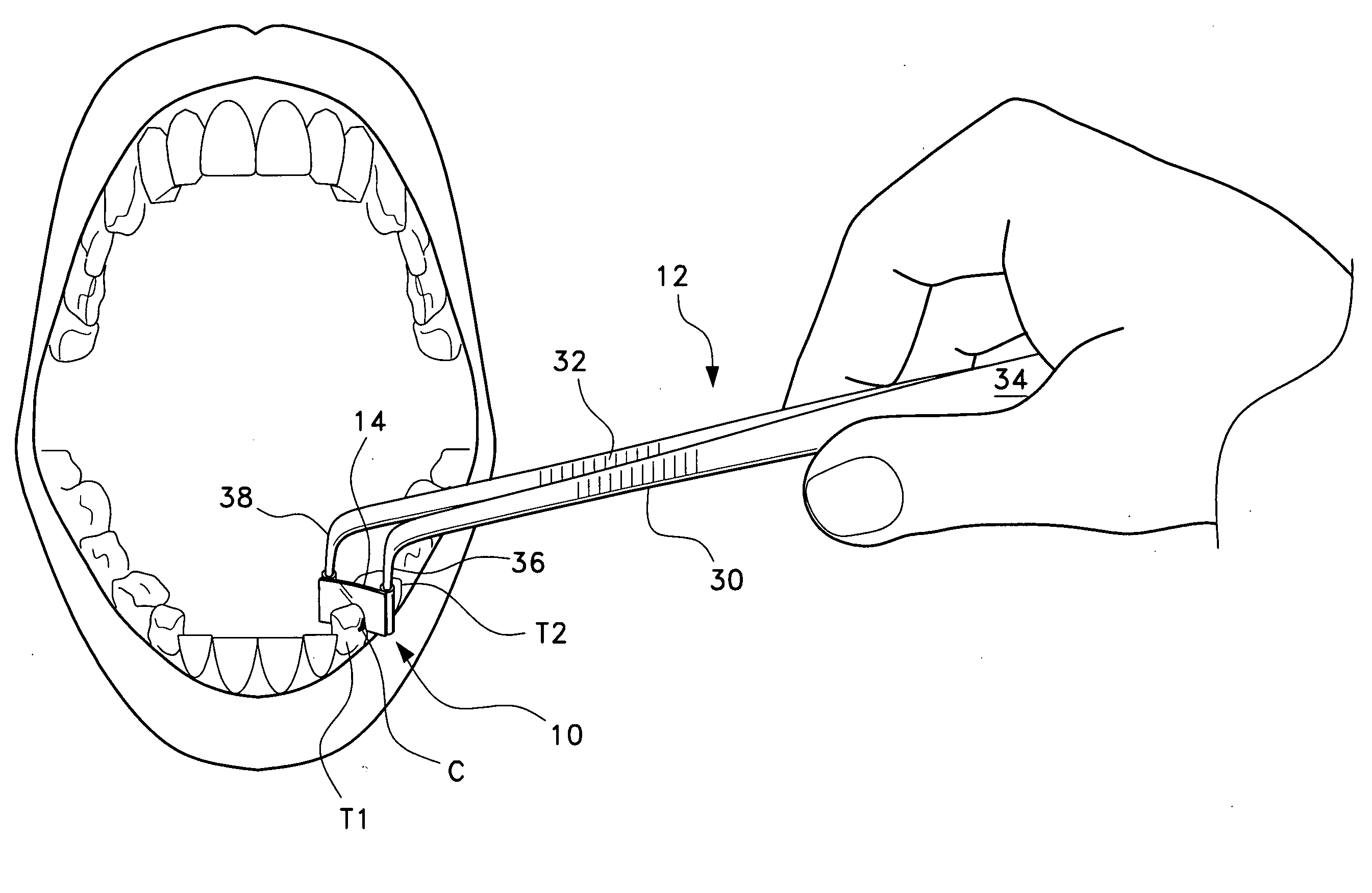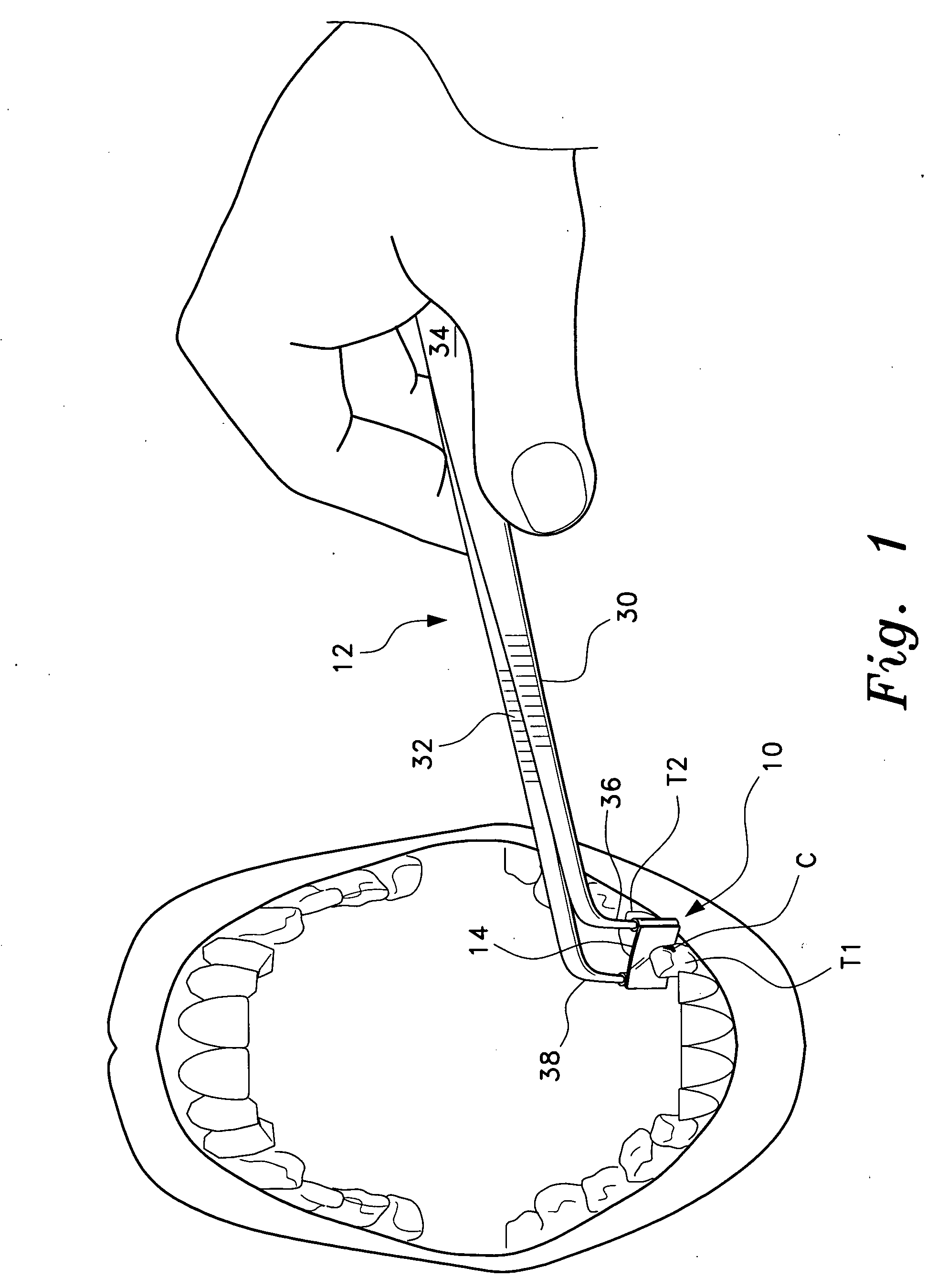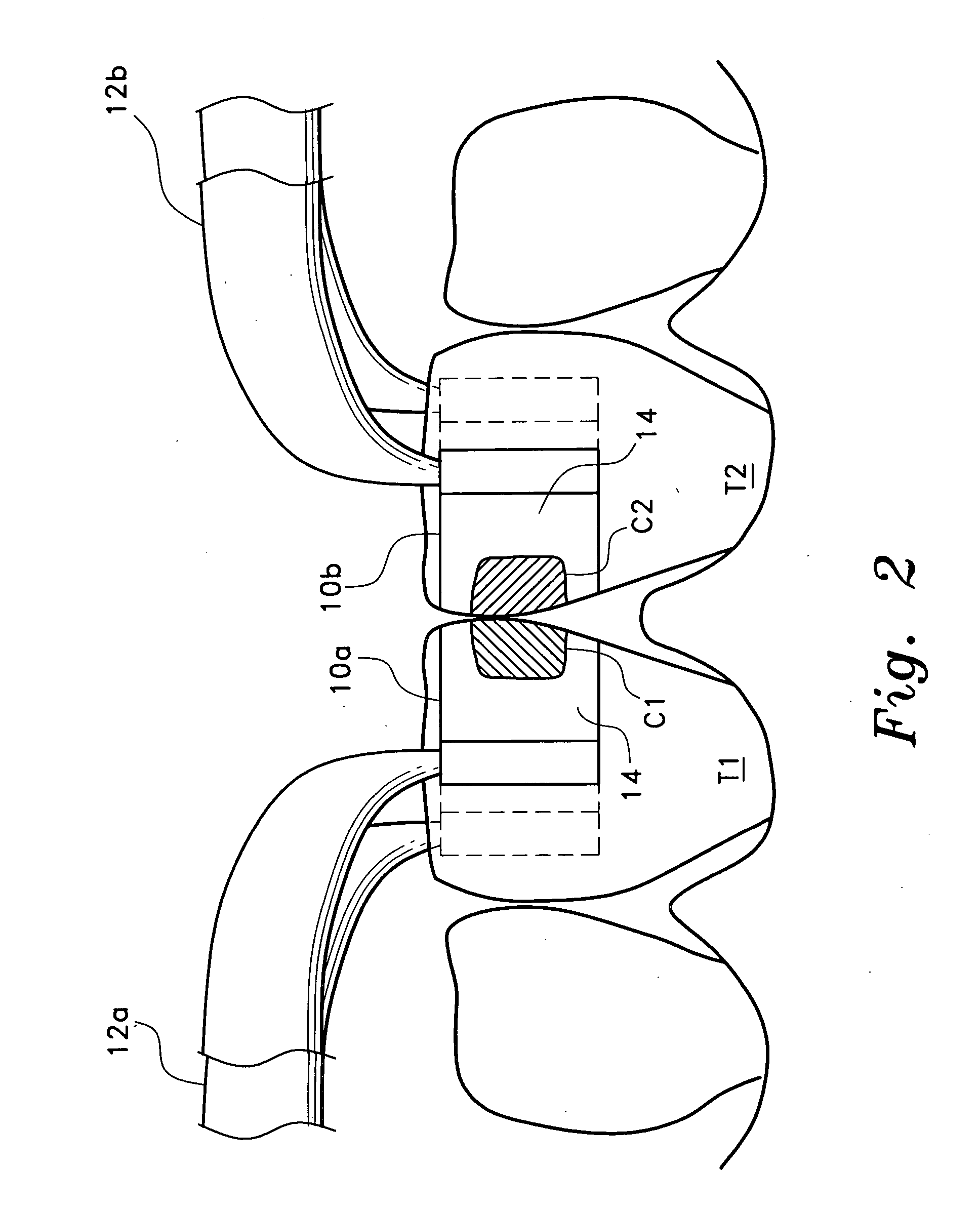Anterior composite matrix dental restoration system
a composite matrix and dental restoration technology, applied in the field of dental tools and equipment, can solve the problems of most common decay in more difficult areas to clean, most difficult to treat, and most difficult to clean cavities and fillings, and achieve the effect of great comfor
- Summary
- Abstract
- Description
- Claims
- Application Information
AI Technical Summary
Benefits of technology
Problems solved by technology
Method used
Image
Examples
Embodiment Construction
[0034] The present invention comprises various embodiments of an anterior composite matrix dental restoration system, i.e., a dental matrix and a manipulation tool therefor, for use in holding a filling material in place in a front (anterior) tooth as the filling material sets or cures in the previously prepared tooth. FIG. 1 of the drawings provides an illustration showing an exemplary installation of the present matrix 10 between two adjacent anterior teeth T1 and T2, with the forwardmost tooth T1 having a freshly prepared cavity C therein. Dental caries, such as the cavity C, often form between teeth due to trapped food lodging between the teeth that supports decay-causing bacteria. These between-the-teeth cavities are classified as class III, when they extend along the side of a tooth, although they may approach the front and back of the tooth as well, or more technically, cavities in the proximal surfaces of incisors and cuspids or canines not requiring removal of the incisal a...
PUM
 Login to View More
Login to View More Abstract
Description
Claims
Application Information
 Login to View More
Login to View More - R&D
- Intellectual Property
- Life Sciences
- Materials
- Tech Scout
- Unparalleled Data Quality
- Higher Quality Content
- 60% Fewer Hallucinations
Browse by: Latest US Patents, China's latest patents, Technical Efficacy Thesaurus, Application Domain, Technology Topic, Popular Technical Reports.
© 2025 PatSnap. All rights reserved.Legal|Privacy policy|Modern Slavery Act Transparency Statement|Sitemap|About US| Contact US: help@patsnap.com



